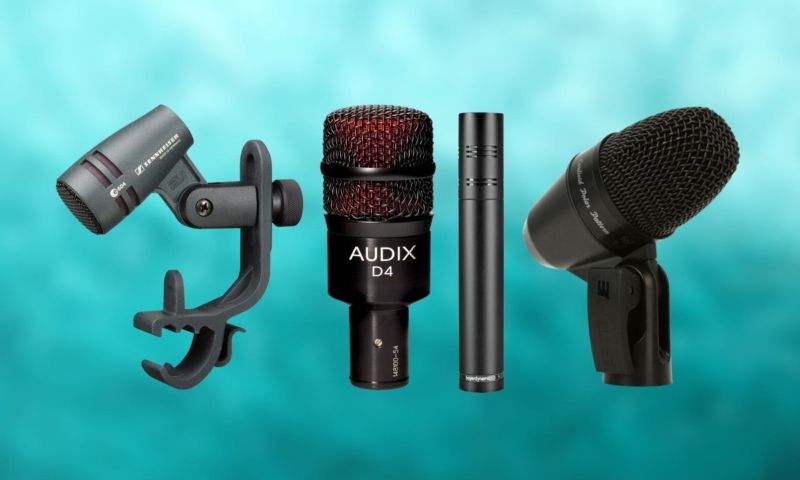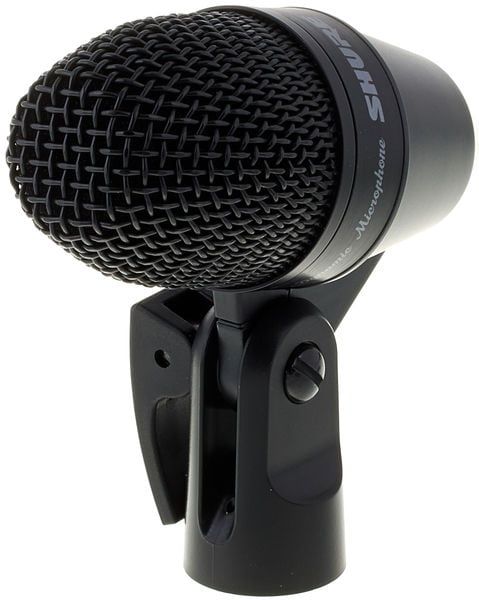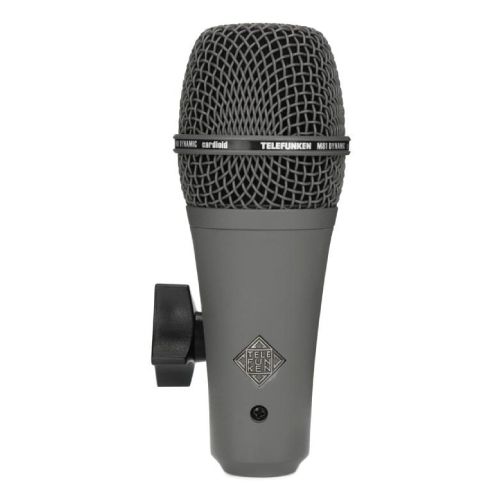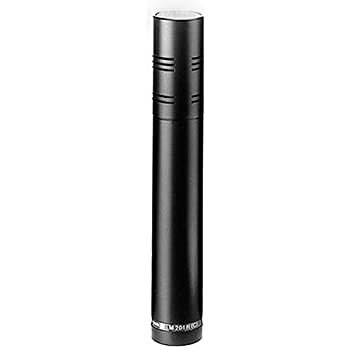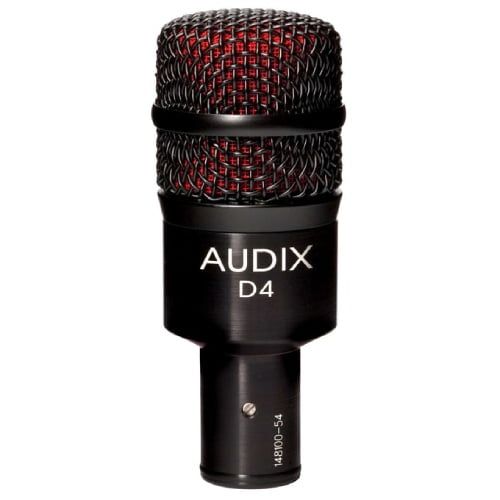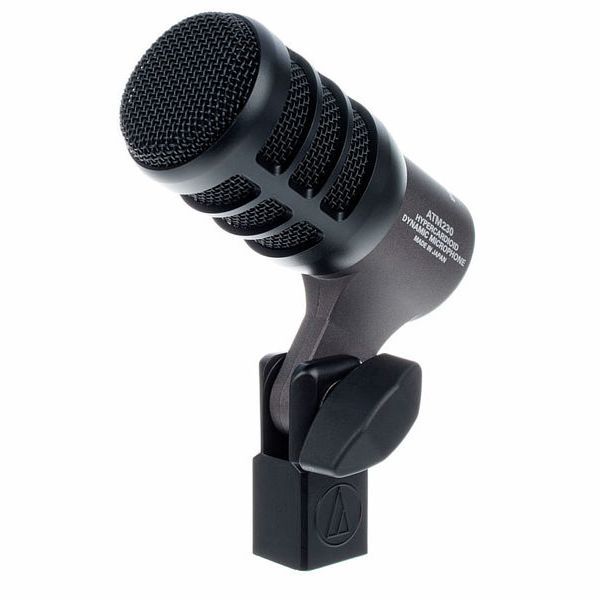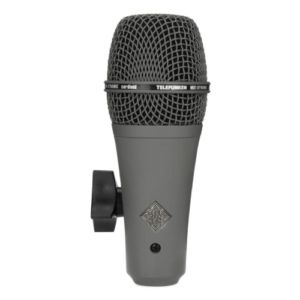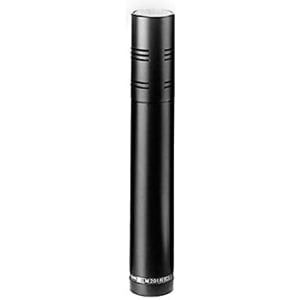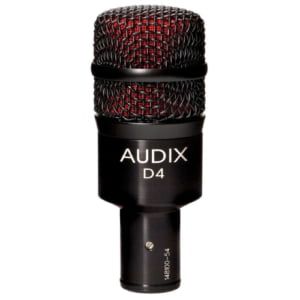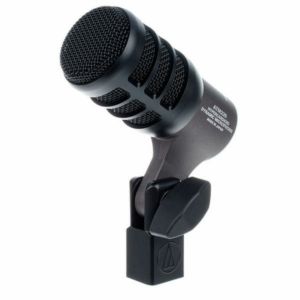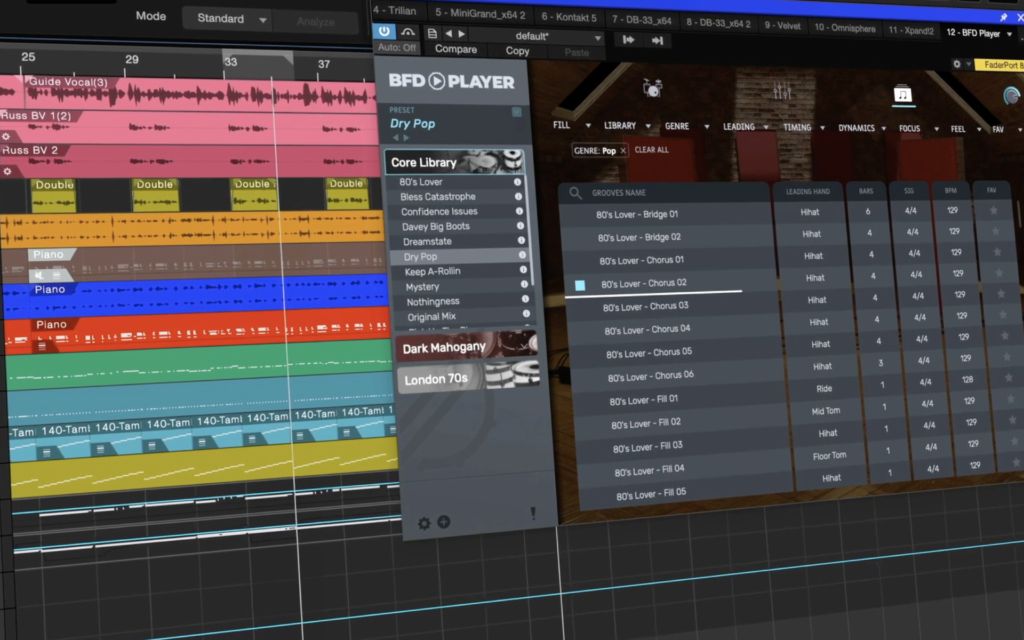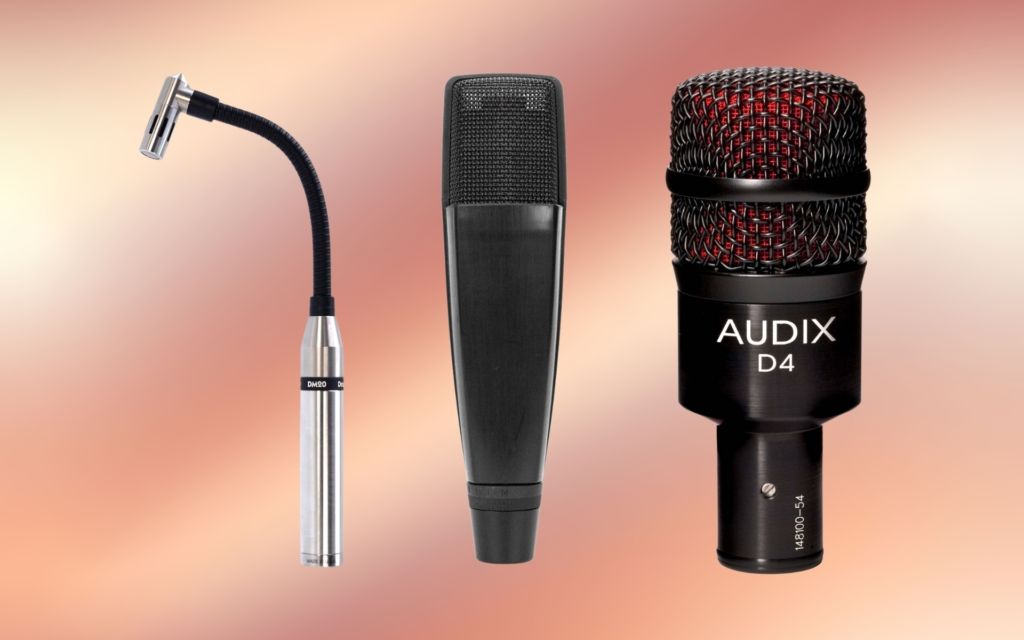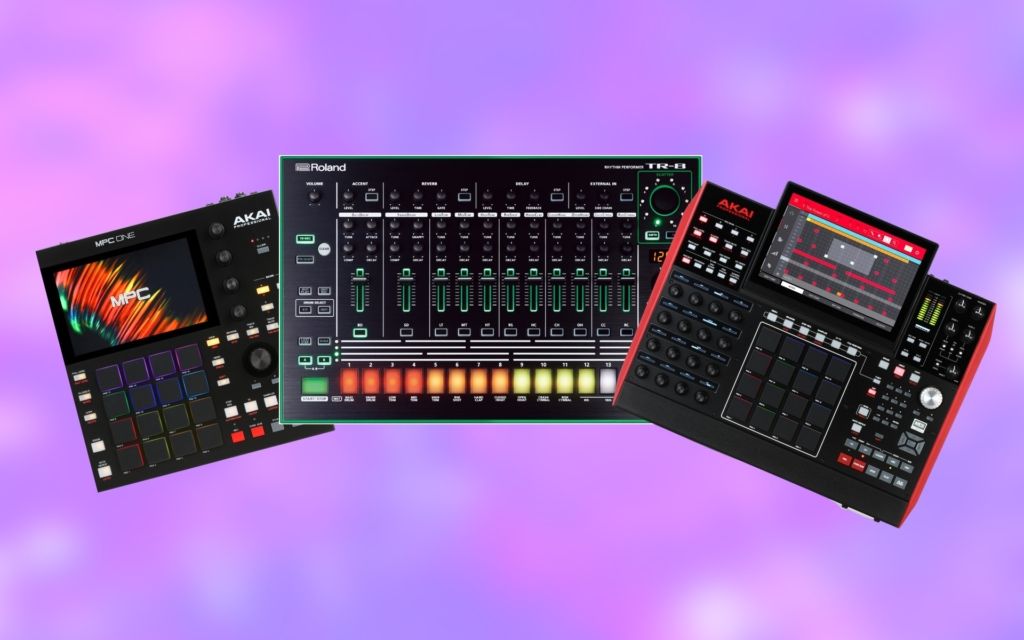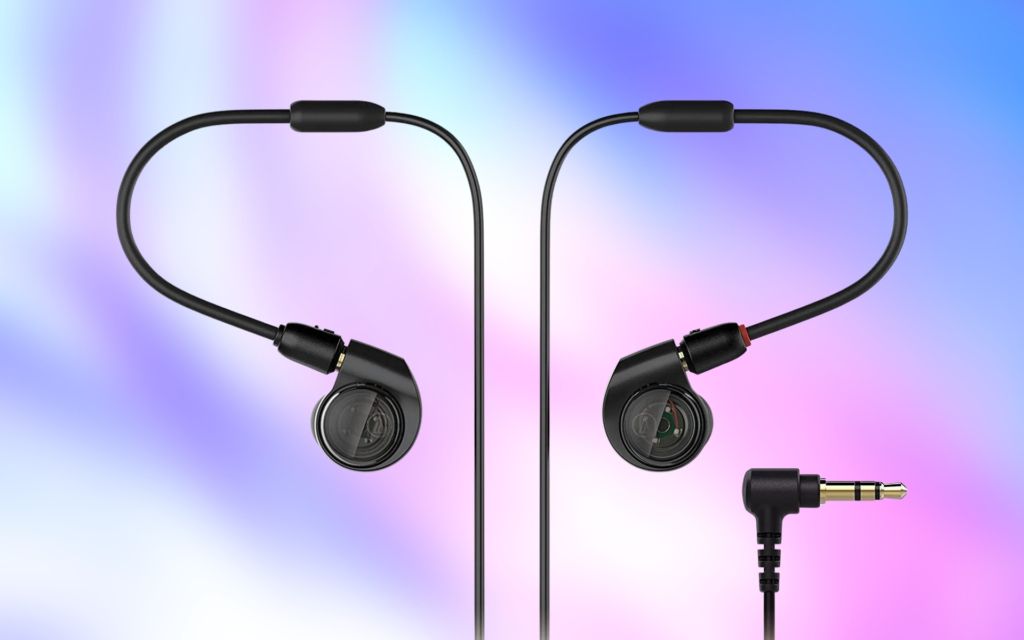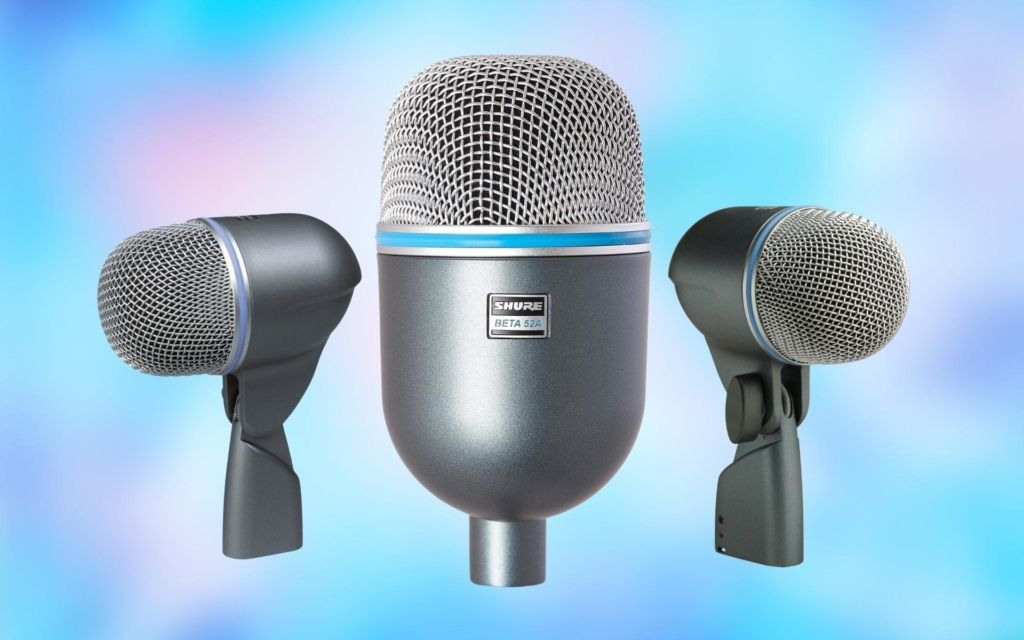I review products independently and only recommend products I would use myself. If you purchase through a link, I may earn an affiliate commission. Learn more.
Tom mics add depth to your drum sound. They focus on the sound of each of your toms, giving a more complete and intentional idea of your entire kit through a mix.
Tom mics are essential for use both live and in the recording studio if you want to achieve the best sound possible from your drum kit.
The number of tom mics you require depends on the number of toms you have on your drum kit. When it comes to tom mic options, mics with wide frequency patterns tend to perform better with toms due to their tonal range.
In this guide, I’ll be exploring some of the best tom mics currently available on the market. Throughout my research, I’ve carefully compared their performance, sound quality, durability, and cost to provide you with my top recommendations.
In a Rush’ Round-Up
How I Tested and Selected the Best Tom Mics
I’ve been recording my own set of drums for various projects for many years. In that time, I’ve realized the importance of tom mics in richening the tom tones. I’ve also come to learn exactly what I need when buying new ones.
When testing mics, I first look at how easy they are to mount to rims. While that’s not the most important feature, I can’t understate how helpful it is when setting up a kit.
After that, I’ll play the toms to hear how they sound through the mic before doing any mixing or EQing. The raw sound always gives me a good idea of how the mics respond, with some sounding a lot clearer than others.
I’ll then do a bit of a mix to see how workable the microphone is. I’ll play the toms with various dynamics, including loud strokes and soft ghost notes to see how the mic picks those up.
Through this testing process, I’ve been able to find six incredible microphones that work well for toms.
Tom Mics Reviews
Telefunken M81-SH Supercardioid Dynamic Microphone
Telefunken M81-SH Supercardioid Dynamic Microphone Review
The Telefunken M81-SH is an excellent microphone that can be easily used to mic rack toms and floor toms. It has undeniable quality, but there are a few more things about it that make it a compelling option compared to other popular picks.
One of the key features is that it offers very similar performance quality to a condenser microphone, even though it has the design of a traditional dynamic mic.
With condenser-like qualities, I found that the sounds it picked up from my toms were seriously rich and defined.
The overall frequency response was quite flat, with the mids sounding punchy and the highs being pulled back slightly.
The result was plenty of control over how I wanted my toms to sound. The initial sounds are amazing, but you can alter things in the mix very easily due to the microphone’s versatility.
The capsule of the microphone is built very well. It’s really robust, making it seem almost invulnerable to stray drumstick shots.
I’ve heard people say it has the durability of a dynamic mic but the performance of a condenser. That pretty much sums it up.
Regarding the price tag, the M81-SH is a bit pricier than microphones like the Audix D4 or the Sennheiser E604. However, it’s still decently priced compared to some higher-end options, and it produces similar sound quality.
Overall, the Telefunken M81-SH is an excellent tom mic option, especially if you’re looking for a flat response that gives you plenty of room to work within a mix.
Pros
- Offers similar performance quality to a condenser microphone even though it’s a dynamic one
- Full mids and crystal-clear highs
- Easy to achieve various tom sounds due to the flat frequency response
- Highly durable casing
Cons
- Slightly pricier than many other good options
Sennheiser E604 Dynamic Cardioid Microphone
Sennheiser E604 Dynamic Cardioid Microphone Review
The Sennheiser E604 Dynamic Cardioid Microphone is the best tom mic on the market having a near-perfect design, being virtually bulletproof, and having the benefit of leaving a very small footprint on toms with its compact size.
The small size is what drew me to this mic, as it was so easy to place on my toms without worrying about it being in the way.
The E604 delivers a fantastic frequency response range of 40Hz-18kHz with a tight cardioid polar pattern to capture the direct sounds of rack and floor toms.
These microphones are the best tom mics for live sound because the sound quality they deliver is truly fantastic.
I’ve always found this mic to deliver a clear and consistent sound, with the build quality being very impressive.
These microphones are the perfect choice for toms because they are unobtrusive, light, and very easy to adjust on a drum set. They achieve a deep and rich tom sound with lots of clarity.
The sound quality obtained from the Sennheiser E604 microphones is crystal clear. They capture a smooth and detailed response that has the right amount of attack as well as warmth and clarity.
A huge advantage of these microphones is that they are incredibly easy to set up. The included clamp attaches very easily to the hoop of the drum and the microphone is never an obstruction whilst playing due to its innovative small profile.
The Sennheiser E604 delivers brilliant results when recording drums both live and in the studio, combining an excellent tonal response and a rock-solid build quality.
For tom’s, the E604 is a difficult microphone to beat, and it’s by far one of the best tom mics to invest in for both studio and live use. Sennheiser also offers an industry-leading 10-year guarantee with the E604 microphone.
Pros
- Highly detailed and clean sound
- Light and very easy to adjust
- Unobtrusive design and small footprint
- Rock-solid build quality with industry leading 10-year guarantee
Cons
- Not the most versatile microphone
Beyerdynamic M201TG Dynamic Hypercardioid Microphone
Beyerdynamic M201TG Dynamic Hypercardioid Microphone Review
In close second place for the best tom mic is the Beyerdynamic M201TG Dynamic Microphone which delivers incredibly detailed and crystal-clear sounds.
I find that this mic has a brilliantly articulated sound as well as a tight polar pattern which means it won’t catch other unwanted sound sources.
The hyper-cardioid polar pattern of this microphone effectively rejects bleed from other drums whilst it can draw out immense body and depth from the toms. The M201TG is one of the best tom mics because it captures lots of details and delivers a premium sound.
This is one of the more expensive tom mics but this is a beautifully designed and robust microphone that delivers a very detailed and natural sound. It is rugged and versatile and makes an excellent choice for snare drums.
The Beyerdynamic M201TG is one of the best tom mics if you don’t mind spending extra on quality. It is not quite as compact and easy to set up for drum recording as the Sennheiser E604, but this microphone is the weapon of choice for many professional, world-renowned engineers and music producers.
Each Beyerdynamic M201TG tom microphone is designed and manufactured in Germany using the latest technologies.
Pros
- One of the very best universal dynamic microphones
- Hypercardioid polar pattern offers excellent noise isolation
- Ultra versatile and suitable for wide range of instruments
- Designed and manufactured in Germany
Cons
- Expensive microphone to be used for toms specifically
Audix D4 Hypercardioid Dynamic Drum Microphone
Audix D4 Hypercardioid Dynamic Drum Microphone Review
The Audix D4 Hypercardioid Dynamic Drum Microphone is a premium quality microphone that is perfectly suited for close drum kit micing, in particular for rack toms and floor toms.
It is a compact and rugged tom microphone that is very easy to position, and it delivers tight and punchy sounds.
I find that the Audix D4 performs exceedingly well and it captures a very clear sound, making it quite an easy mic to work with.
The hyper-cardioid pickup pattern rejects unwanted ambient sounds effectively. It focuses on the direct sound source and can draw out very clean and full sounds. It offers a fantastic transient.
The build quality of the unit is fantastic. It’s designed to last a lifetime with each unit being individually tested and hand-assembled for quality assurance.
The Audix D4 does an excellent job of isolating the drum’s sweet spot and delivering a warm and well-rounded tone that packs a lot of punch both live on stage and in the studio.
Overall the Audix D4 is without a doubt one of the best tom mics favored by professionals. It’s the ultimate choice for close drum micing, and it has been designed to perform well for any high-impact sound source such as congas, guitars, or keyboard amps.
Pros
- Excellent durability and build quality
- Superior sound quality and tone
- Handles high sound pressure levels with ease
- Small footprint means its an ideal choice for toms
Cons
- Very few negatives
Audio-Technica ATM230 Drum Microphone
Audio-Technica ATM230 Drum Microphone Review
Audio-Technica’s ATM230 has all of the capabilities for recording high, mid, and floor toms. With its hypercardioid polar pattern, the mic can hone in on the tom rather than picking up the other drums and cymbals simultaneously.
This focused directionality makes mixing recordings of your toms much easier, as you won’t need to EQ any other sounds out or remove them using a noise gate.
The more separation you can achieve when recording drums, the easier it is to use compression.
I found that the ATM230 is a great choice for tight drum sounds, as it allows you to process the tom recordings without having to contend with too much spill.
The ATM230 can easily handle high SPLs, even at very close range. It’s suitable for capturing big-sounding toms, regardless of how much force the drummer plays with.
This microphone feels robust and solidly built, which is something we’ve come to expect from Audio-Technica devices. It has a swivel mount attached to the bottom, allowing you to precisely angle the capsule.
Inevitably, tom mics get dropped, knocked over, or struck with a stick, so the durability of this mic is an important quality. There have been so many times in the past where I’ve unintentionally damaged my microphones, so I’ve learned the importance of durability.
Although it’s better suited to recording, the ATM230 can also be used for live performances. For this purpose, it may benefit from being combined with a mic preamp to add a little warmth to the sound.
Pros
- Excellent isolation
- Handles high SPLs with ease
- Affordable price tag compared to other mics
- Punchy and focused tom sounds
Cons
- Better suited to recordings rather than live drums
Shure PGA56 Cardioid Dynamic Microphone
Shure PGA56 Cardioid Dynamic Microphone Review
The Shure PGA56 Dynamic Snare Drum Microphone is a very popular choice for tom mics in live venues as well as home studios.
The PGA56 mic features a tailored microphone cartridge that delivers a clear sound reproduction and the cardioid pickup pattern rejects unwanted ambient noise.
Shure microphones are renowned for their use in professional applications, and for their high-quality sound reproduction, and durability.
I’ve always viewed the Shure PGA56 as the perfect workhorse for live shows, as it has an excellent build quality and metal housing to survive knocks and bumps.
The Shure PGA56 drum microphone delivers rock-solid sound and reliability no matter the application for its use. It’s one of the best tom mics to buy on a budget and offers the professional level of performance you can expect from Shure.
If you are looking for the best tom mics with only a small budget then this is a solid choice. It delivers clear and punchy sounds from the toms and it’s an affordable microphone. It’s also very easy to attach to drums with the included clamp and adapter.
It just doesn’t deliver the same sonic clarity and punch as other tom microphones on this list like the Audix D4 or Sennheiser E604 microphones. It also has a bulkier design, unlike these offerings which have a low profile better suited for drum placement.
Pros
- Perfect workhorse for live shows
- Highly rugged design and metal housing
- Clear sound reproduction
- Good value for money
Cons
- Lacks richness and depth of premium mics
- Bulkier than other tom microphones
Tom Microphone Buyer’s Guide
Getting a good set of tom mics is the final step of building an excellent drum kit microphone setup. Remember that to run tom mics along with overheads, a kick mic, and a snare mic; you need to have a recording interface with eight or more channels.
Having mics on your toms gives your drum kit a studio-quality sound in a mix. The toms have extended attack as opposed to them sounding distant in a recording setup with only overhead mics to pick their tones up.
Here’s what you need to look for when buying tom microphones.
Things to Consider When Buying a Tom Microphone
Decide whether to get a single mic or a mic pack
If you have no mics to begin with, it’s better to buy a full set of mics for your whole kit to save a bit of money. If you already have overheads and a kick mic, then it’s better to buy tom mics individually. You can get a few packs that only come with tom mics, but they’re not very common.
Look for mounting clips
Some tom mics come included with clips to attach to the rims of your drums to mount them. If they don’t, you either need to put the mic on a boom stand or buy attachment clips separately. Buying separate clips is the better option here as they save space.
Look for high SPL handling
Tom mics need to have high sound pressure level handling as they’ll be positioned close to your toms that you’ll hit very hard. If they don’t have high SPL levels, they’ll end up distorting.
Consider durability
Out of all the drum mics, tom mics get hit accidentally the most. Make sure to get tom mics with durable casings and rugged build quality.
What to Look for in the Best Tom Mics
Frequency Response
Toms have very wide tuning ranges, so the best tom mics to get should have wide frequency response numbers.
You should aim for tom mics that cover from 40 – 18 000 Hz. Mics with that range will be able to pick up your tom sounds quite vividly.
Top-quality tom mics have very wide frequency ranges, while affordable mics have smaller ranges.
Sound Quality
Sound quality is the main feature to look out for when buying tom mics. Some mics sound a lot better than others without any mix or EQ, and better-sounding mics are easier to work with in live and studio settings.
Inexpensive mics lack many of the details that higher-priced mics bring out from your drums. Seasoned audio engineers may be able to mix them in a way that makes them sound incredible, but less experienced drummers will have a better time after spending a bit more on higher-quality tom mics.
Durability
Tom mics should be very durable, considering that you’ll be playing many drum fills with the potential of hitting them over time.
Durability comes from the casing that the mic has, as well as the quality of the internal wiring. Cheaper mics tend to give out quicker than higher-quality ones.
Small and compact mics are better options for toms compared to pencil mics with long bodies. This is because there’s less surface area to potentially hit with your sticks.
The best way to measure durability is by weight. The heavier a mic is, the longer it will last in most cases. The weight often comes from the casing being metal instead of plastic. Note that mics with metal casing cost more, but they’re a better option in the long run.
Pickup Pattern
Hyper-cardioid is the best pattern for tom mics. Mics with a hyper-cardioid pickup pattern have the most sound rejection from other sources, making them the best for toms that are positioned in between several drums and cymbals.
Cardioid microphones have slightly less sound rejection, but they’re the next best option for toms around a kit.
Hyper-cardioid mics aren’t as versatile as cardioid mics. This makes them excellent for toms, but they won’t work as well for other instruments as cardioid mics will. Keep that in mind if you’re someone who may use your tom mics for other purposes.
Size
Ideally, smaller microphones are better for toms. Rack toms have small surface areas, so you should have mics that can be positioned unobtrusively. There’s a bit more leniency with floor toms, but small mics are still a preferable option.
Small microphones with amazing tone quality cost more than large microphones with similar tonal quality. So, getting very unobtrusive mics that sound amazing comes at a cost.
You can get slightly larger mics at a more affordable price, but they’ll be harder to position as nicely.
Tom Mic FAQs
Where’s the Best Place to Position a Tom Mic?
The most common technique for tom mic placement is to raise the mic so that it’s the height of two fingers and then point it to the center of the tom.
This positioning may change depending on how high or low your cymbals are positioned around the toms. If they’re low, you need to adjust the tom mics, so they don’t pick up any bleed from the cymbals.
How Important are Tom Mics?
Tom mics are essential for getting a clear sound representation of your drum kit. They are essential for use both live and in the recording studio if you want the best sound possible.
If you want to start recording your drum kit, you should purchase overheads and a kick mic first, though. You can get a great-sounding mix with only those. The addition of tom mics will provide an even better and cleaner-sounding drum mix.
Should You Put Tom Mics Underneath Your Toms?
Putting tom mics underneath toms is something that professional recording engineers do when they have enough mics and inputs to run them through the setup. Having as much control over the drum sound as possible is something that recording engineers need.
You don’t need extra mics to put under the toms if you’re playing casual live gigs or recording in your practice space. You can get amazing tom sounds in the mix without doing that.

